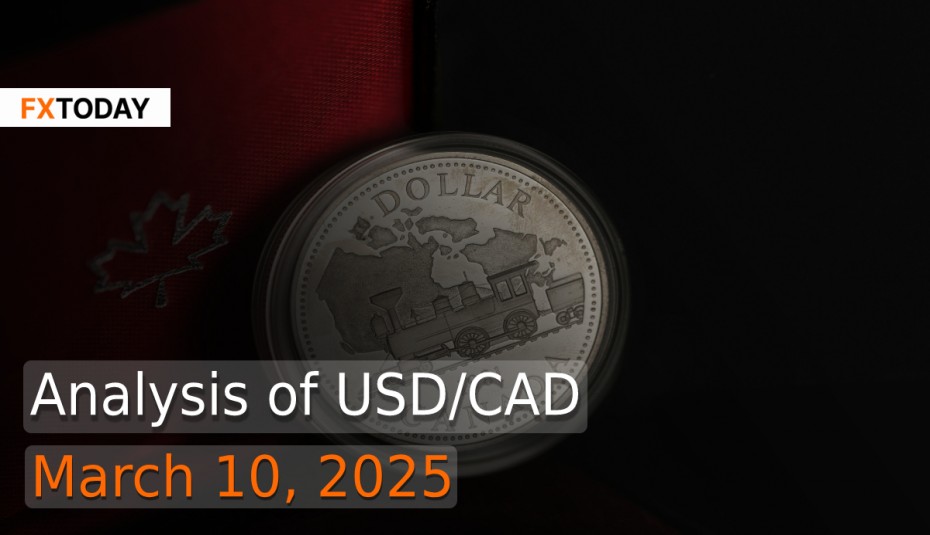Canada’s Economy Expands, But Trade Risks Loom
The Canadian dollar has fallen 7% against the U.S. dollar in six months, adding inflationary pressure. Markets now expect a 25-bps BoC rate cut, with a 50-bps cut possible. Analysts caution that even if tariffs are lifted, weak investment and cautious consumer spending may hinder recovery.
Despite this, Canada’s economy expanded at the fastest pace in seven months in February, driven by rising employment and prices, according to the Ivey PMI, which rose to 55.3 from 47.1. Employment strengthened, with the index at 53.7, while the prices index surged to 71.5 from 64.4.
In Q4, GDP grew 2.6% annualized, beating forecasts of 1.8%, fueled by consumer spending, business investment, and exports. Household spending rose 1.4%, the highest since mid-2022, while business investment, traditionally weak, increased 0.7%. Per capita real GDP grew 0.2%, only the second increase in seven quarters.
The Bank of Canada has cut rates by 200 basis points since June, bringing them to 3% in January. However, stronger-than-expected GDP may prompt a pause. The BoC’s next rate decision is set for March 12, with expectations for a 25-bps cut now below 50%.
Canada’s budget deficit for the first nine months of FY2024/25 fell to C$21.72 billion from C$23.61 billion a year earlier, as revenues grew 11.8%, outpacing a 10.7% rise in expenses. In December, the budget swung to a C$1 billion surplus from a C$4.47 billion deficit.
The trade surplus hit a 32-month high at C$3.97 billion in January, with exports surging 5.5% to a record C$74.5 billion, led by motor vehicles and energy. The surplus with the U.S. also hit a record C$14.4 billion. While the U.S. initially imposed a 25% tariff on Canadian imports, a temporary suspension was announced, contingent on trade agreement compliance.
Despite growth, Canada’s manufacturing and services sectors struggled in February. The Manufacturing PMI fell to 47.8 from 51.6, marking the first contraction in six months. Services also declined sharply, with the Business Activity Index dropping to 46.6 from 49.0.
Unemployment held at 6.6% in February, with just 1,100 jobs added, well below the 20,000 forecast. Gains in retail and finance were offset by declines in professional services and transportation, with snowstorms impacting work hours. Uncertainty over U.S. trade policies is also affecting hiring.
In response to U.S. tariffs, Canada introduced measures to protect businesses and workers, including a C$5 billion Trade Impact Program and C$500 million in low-interest loans. Additional support includes C$1 billion for agriculture and adjustments to foreign investment rules.
U.S. tariffs remain a major threat to Canada’s economic recovery, potentially pushing inflation higher and increasing recession risks. Economists warn that prolonged tariffs could erase two years of growth. The BoC has warned of slower long-term growth and rising inflation if tariffs persist. In retaliation, Canada imposed duties on C$30 billion of U.S. goods, with more to follow, potentially raising consumer prices by 2%. Analysts warn of potential effects on corporate profits, credit ratings, and the housing market if the downturn persists.
In the U.S., economic uncertainty has pressured the dollar, which fell to multi-month lows after weaker-than-expected job growth in February. The U.S. added 151,000 jobs, fueling expectations for Fed rate cuts. Futures pricing suggests 78 bps of easing in 2025, with the first cut likely in June.
Planned U.S. job cuts surged 245% in February, with government agencies accounting for most layoffs. Despite productivity gains, the labor market remains strained, with economists concerned about trade policy uncertainty and slowing growth.
The U.S. trade deficit widened to a record $131.4 billion in January, driven by a 10% surge in imports ahead of new tariffs. With U.S.-China and U.S.-Canada tensions escalating, economists warn of further economic strain.
As a result, if U.S. tariffs persist, recession risks could weigh on CAD, while Fed easing expectations could cap USD strength. Near-term, USD/CAD may trade within a range, with a bias toward CAD stabilization if BoC holds rates steady and U.S. economic concerns deepen.
Data for Technical Analysis (1H) CFD USD/CAD
Resistance : 1.4365, 1.4368, 1.4372
Support : 1.4357, 1.4354, 1.4350
1H Outlook
Source: TradingView
Buy/Long 1 If the support at the price range 1.4347 - 1.4357 is touched, but the support at 1.4357 cannot be broken, the TP may be set around 1.4367 and the SL around 1.4342, or up to the risk appetite.
Buy/Long 2 If the resistance can be broken at the price range of 1.4365 - 1.4375, TP may be set around 1.4382 and SL around 1.4352, or up to the risk appetite.
Sell/Short 1 If the resistance at the price range 1.4365 - 1.4375 is touched, but the resistance 1.4365 cannot be broken, the TP may be set around 1.4356 and the SL around 1.4380, or up to the risk appetite.
Sell/Short 2 If the support can be broken at the price range of 1.4347 - 1.4357, TP may be set around 1.4342 and SL around 1.4370, or up to the risk appetite.
Pivot Points Mar 10, 2025 02:39AM GMT
|
Name
|
S3
|
S2
|
S1
|
Pivot Points
|
R1
|
R2
|
R3
|
|---|---|---|---|---|---|---|---|
| Classic | 1.4345 | 1.435 | 1.4356 | 1.4361 | 1.4367 | 1.4372 | 1.4378 |
| Fibonacci | 1.435 | 1.4354 | 1.4357 | 1.4361 | 1.4365 | 1.4368 | 1.4372 |
| Camarilla | 1.436 | 1.4361 | 1.4362 | 1.4361 | 1.4364 | 1.4365 | 1.4366 |
| Woodie's | 1.4347 | 1.4351 | 1.4358 | 1.4362 | 1.4369 | 1.4373 | 1.438 |
| DeMark's | - | - | 1.4358 | 1.4362 | 1.4368 | - | - |
Sources: Investing 1, Investing 2
















